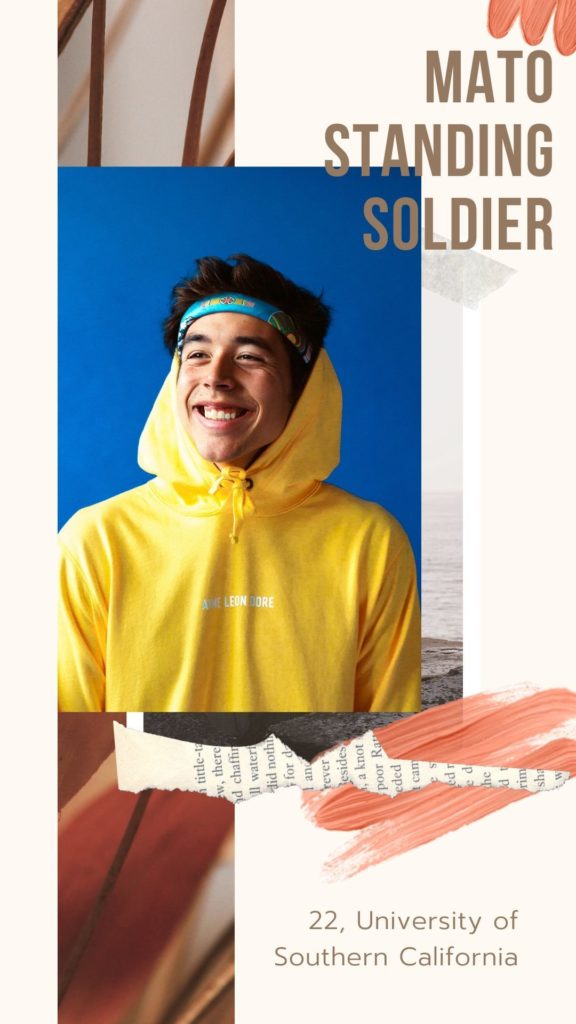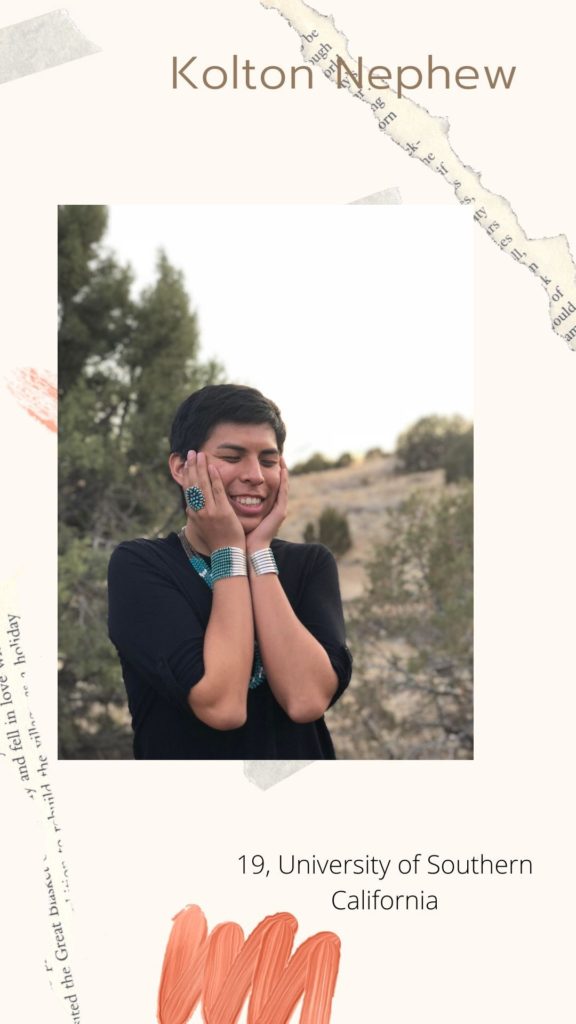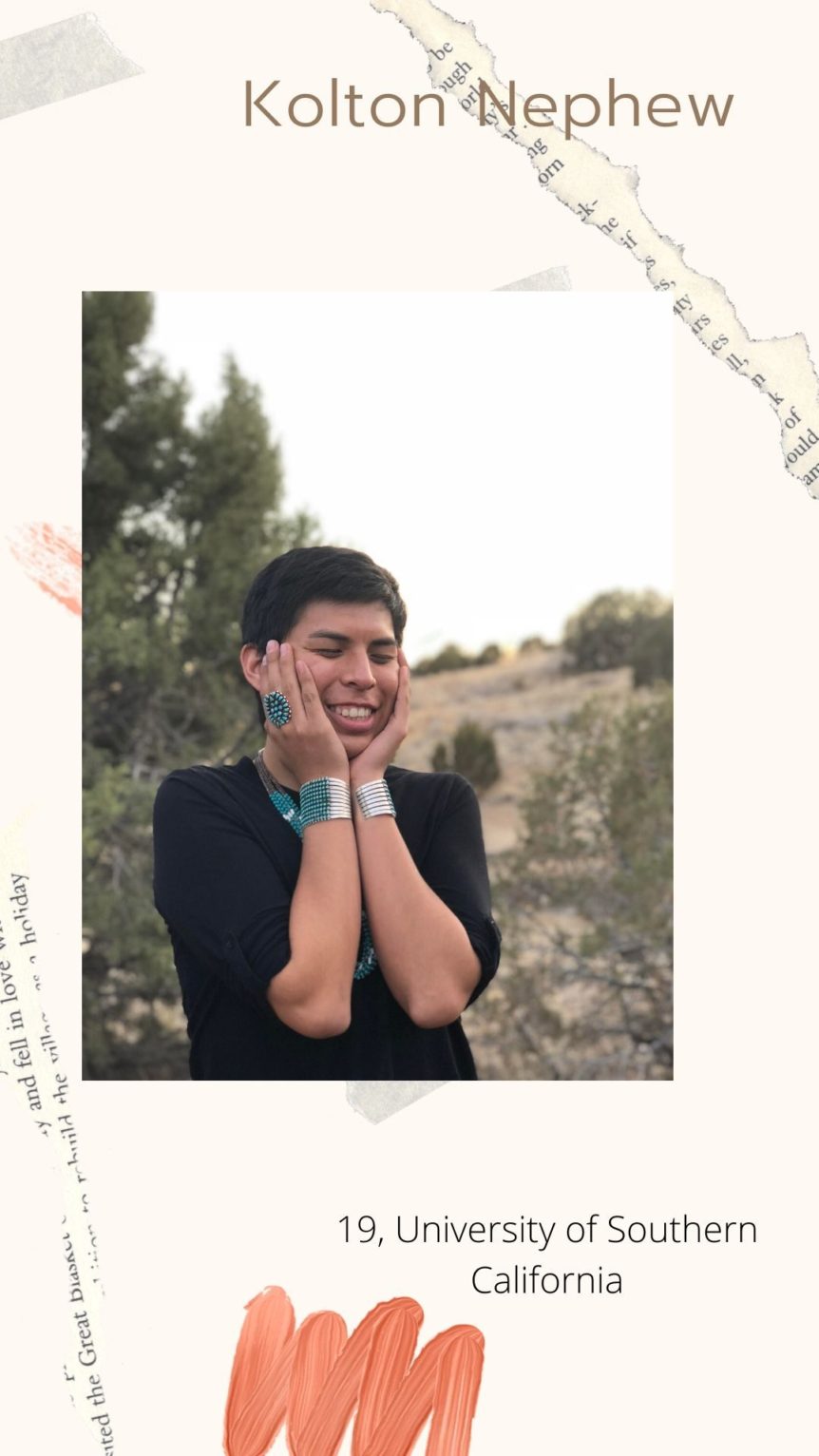December 30, 2019 – By Very Good Light – featuring interviews with USC Students, Kolton Nephew & Mato Standing Soldier.
“Well, since you’re Native American, you must be able to attend college for free, right?”
As one of the first to attend college – I’m a freshman at the University of Southern California – I remember that I’m making history in not only my family, but my tribe.
It makes me remember the stories of my paternal grandparents, my nalí hastiin and nalí asdzáán, both who tell me of their time at American boarding schools. They received trauma that would still scarred them today when white teachers and dorm assistants whipped and beat them, often for offenses like speaking Navajo or not being able to respond in English. It was their punishment into self-hatred for being “Indian.”
This generation of trauma still lasts today. While the national average of U.S. high school students pursuing higher education is over 60%, only 17% of American Indian/Alaskan Native high school students even continue their education past high school. Even if American Indian/Alaskan Native high school students attend college, they still face far greater challenges opposed to other students that are overlooked by institutions. Consequently, we as Native Americans/Alaskan Natives only comprise 1% of the undergraduate population in the entire country, it is infuriating to say that we are the last thought of in higher educational institutions.
Speaking from personal experience completing my first semester at USC, I am able to see these facts come to life. We are a small community comprised of about less than 20 Natives that attend a predominantly white institution, one that neglects our presence. Even though we are part of the Native American Student Union (NASU), this institution chooses to label us as a club instead of a minority organization based on our low numbers. But what they do not consider is why there are such low numbers in the first place. They fail to acknowledge the historic traumas, institutional racism, and educational prejudice that not only affect USC but institutions across the nation.
Although these statistics seem discouraging, it doesn’t paint the entire picture of our Native American people. Unlike common assumptions, we do have aspirations to go out, earn degrees, and explore the world beyond our reservations. At the core of our passion is to return to our people and make positive change. In different fields of occupations, we feel it is our duty to go back home, help our people and reservations, in the hopes that we can compete on the world stage. We’re still here and not just trapped inside your white-washed history books.
To further reflect the end of this first semester of college, Very Good Light asked Native American students attending institutions across the nation about what it feels like to be Native in colonized spaces. Here’s what it’s really like to go from the reservation to higher level institutions.



